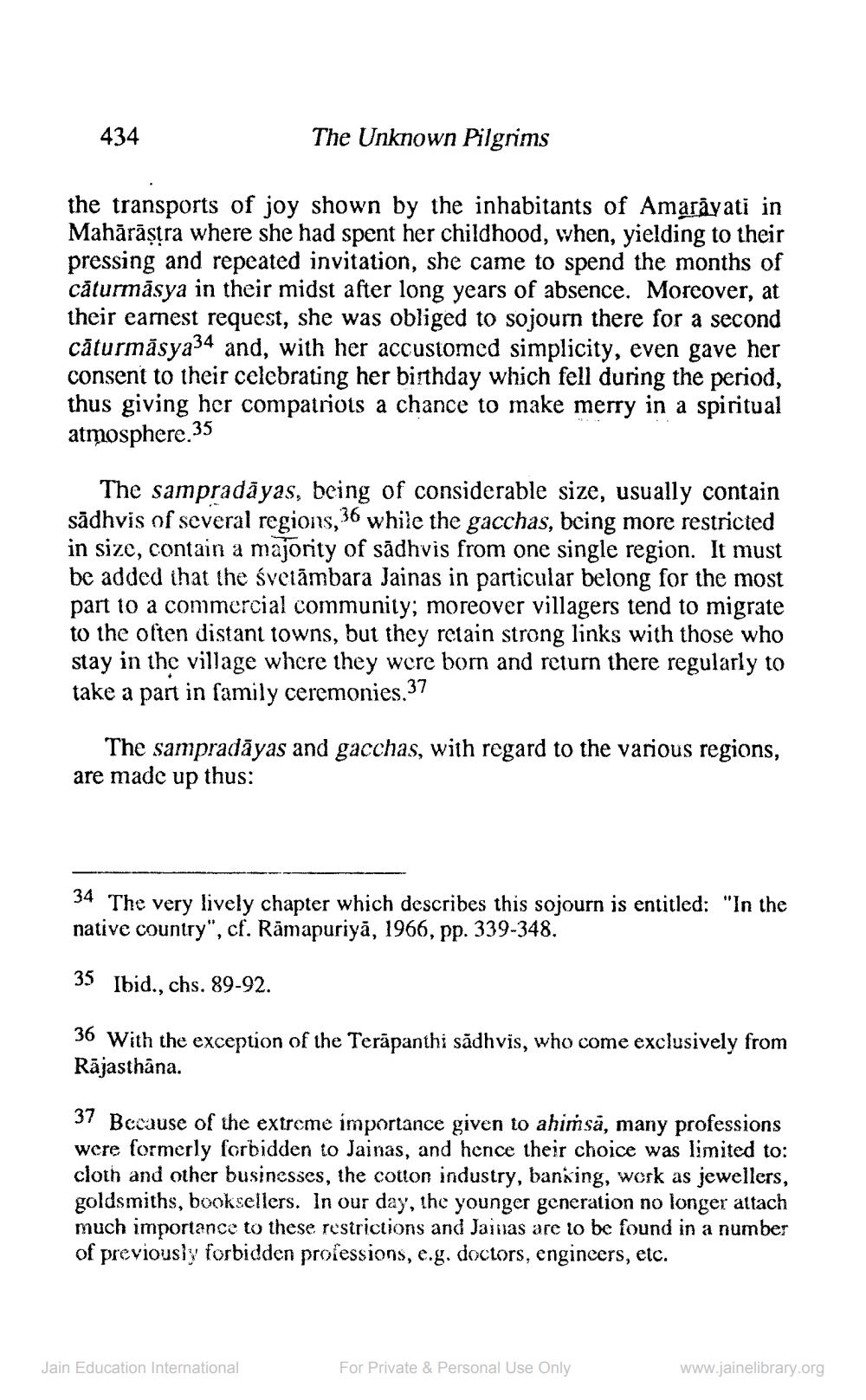________________
434
The Unknown Pilgrims
the transports of joy shown by the inhabitants of Amaravati in Mahārāşțra where she had spent her childhood, when, yielding to their pressing and repeated invitation, she came to spend the months of căturmāsya in their midst after long years of absence. Moreover, at their earnest request, she was obliged to sojourn there for a second căturmäsya34 and, with her accustomed simplicity, even gave her consent to their celebrating her birthday which fell during the period, thus giving her compatriots a chance to make merry in a spiritual atmosphere.35
The sampradāyas, being of considerable size, usually contain sādhvis of several regions, 36 while the gacchas, being more restricted in size, contain a majority of sādhvis from one single region. It must be added that the śvetāmbara Jainas in particular belong for the most part to a commercial community; moreover villagers tend to migrate to the often distant towns, but they retain strong links with those who stay in the village where they were born and return there regularly to take a part in family ceremonies.37
The sampradāyas and gacchas, with regard to the various regions, are made up thus:
34 The very lively chapter which describes this sojourn is entitled: "In the native country", cf. Rāmapuriyā, 1966, pp. 339-348.
35
Ibid., chs. 89-92.
36 With the exception of the Terapanthi sădhvis, who come exclusively from Rājasthana.
37 Because of the extreme importance given to ahiṁsā, many professions were formerly forbidden to Jainas, and hence their choice was limited to: cloth and other businesses, the cotton industry, banking, work as jewellers, goldsmiths, booksellers. In our day, the younger generation no longer attach much importance to these restrictions and Jalnas are to be found in a number of previously forbidden professions, e.g. doctors, engineers, etc.
Jain Education International
For Private & Personal Use Only
www.jainelibrary.org




